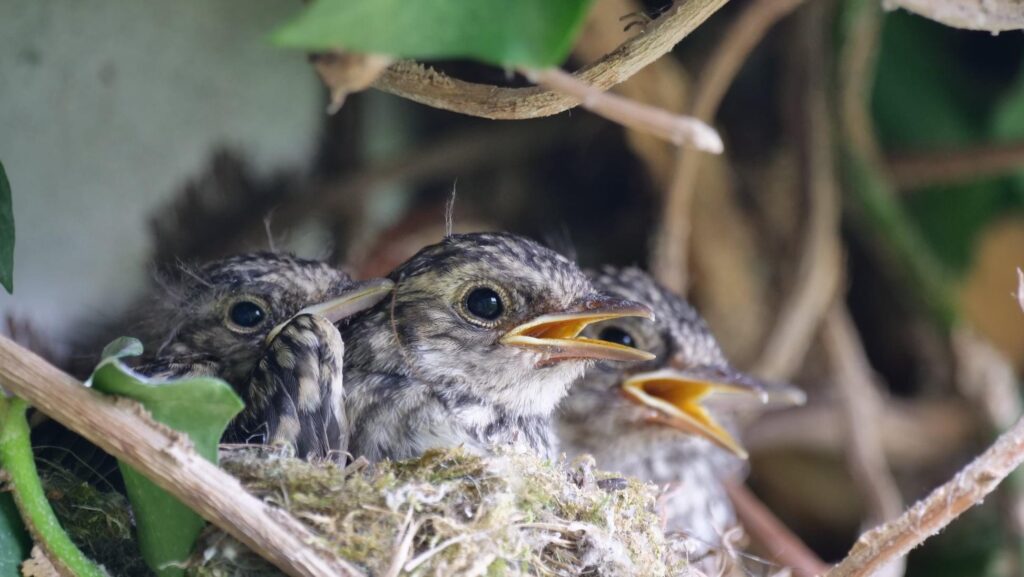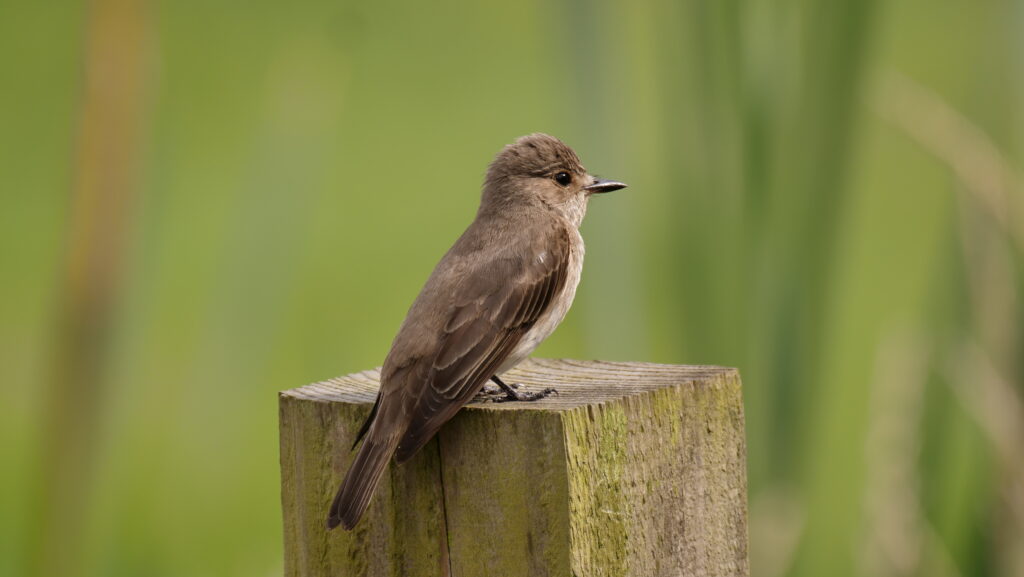I was longing for a return visit from my migratory Spotted Flycatchers friends. Like everyone, I’ve become accustomed to cancelled visits due to the pandemic. The summer was late starting, after a cold snap in spring – the garden was quieter than usual. The world felt vulnerable.
I’ve never taken wildlife for granted. Having shared my garden with the same breeding pair of Barn Owls for nearly 5 years, I learned that when the natural cycle comes to an end, the loss is deeper than you imagined. I miss the female especially, as she would fly to the top of my office and screech at me when I opened the door. I’d screeched back, enjoying the privilege of this incredible relationship with a wild bird. I’d laugh at that beautiful disk-shaped face, bobbing side to side as she summed me up.
On 17th May, I was sat having a coffee at my office window. Directly below is a small vegetable patch with a stock-wire fence and wonky posts, loose from the soft peat soil that is the foundation of the Somerset Levels. It was there, it landed. No idea if male or female, almost impossible to determine the sex of Spotted Flycatchers until nesting time. It didn’t matter, I was thrilled. They were back.
Spotted Flycatchers are on the Red List of Conservation concern but can be seen throughout the UK. They have been visiting and nesting in my garden for the last 3 years. Arriving late Spring from Africa. I was instantly fascinated by them. A beautiful small bird with pencil-nib beak, rounded head and long double-oval tail and sweeping wings. I knew very little about them, so was shocked to read the RSPB’s description as ‘at first glance, spotted flycatchers might seem dull greyish-gown, and, well a bit boring.’ I couldn’t disagree more. They are dapper little birds, dressed for a wedding with the confidence of a Robin as I stand visible at the open window.

I find these passerine visitors stunning with their creamy pale fronts and brown streaked heads. It’s only when you watch a Spotted Flycatcher hunting for food that you truly witness the magic of these little birds. Like a stunt plane, they swoop, dive and hover. Flying insects, moths and butterflies are helpless against their swift manoeuvres.
The Spotted Flycatcher manages to be sleek yet charming at the same time and I strongly refute this general label of ‘dull’.
I’m assuming these to be the same mating pair from last year as they have returned to the same spot. On the wall above the allotment, they had built a cup-like nest and so early Spring this year I fixed a hidden camera so I could observe their behaviour if they returned.

Over the coming weeks I was to witness this beautiful partnership. From the nest refurbishment to the relentless feeding of young. Via the remote camera, I learned that the female would leave the fledglings between 4 and 5am to start catching food, along with the male. A relentless conveyor belt of nourishment and removal of the fecal sacs. Exquisite house-keeping and gentle encouragement for the chicks to ease towards flying the nest. Four chicks successfully fledged with full bellies to set them on their way.
Via the remote camera I was elated to be able to watch 2 of the fledglings launch themselves into their new world – in real time. My heart in my mouth as I wish them all good thoughts for what is such an uncertain world. I was comforted to remember that their travel isn’t restricted and despite whatever my world may be this time next year, they will always be free to visit my allotment.

